Cemetery Grounds, Wheatley Hill DH6 3JY
email: wheatleyhill.heritage.centre@btinternet.com
phone: 01429 824402

© Wheatley Hill Heritage Centre 2018

On 16 September 1914 the new recruits for the 13th DLI were sent south by train from Newcastle upon Tyne to Bullswater Camp near Pirbright in Surrey to become part of the 68th Brigade of the 23rd Division. There began the difficult task of turning enthusiastic civilians into trained soldiers.
This job was made more difficult by the lack of instructors, experienced officers and non-
Finally at the end of July 1915 all ranks were given a day’s leave. Training was over and active service at the Front was about to begin.
This was the first night of the battalion’s first tour of duty in the trenches and the observer was Thomas Kenny.
At 9.15pm on 4 November 1915 Lieutenant Brown, as the officer of the watch, went out to visit a party working on the barbed wire in front of Trench 1.26.4. He was accompanied as always, by his observer, Private Thomas Kenny. The rain had stopped, but with no wind, a thick fog covered no-
They sat down and tried to listen for any sounds that might direct them back to their own lines and safety. Hearing nothing, they decided to try and retrace their steps through the mud. It was about 9.45pm. At the moment they rose, a single rifle shot rang out and Lieutenant Brown fell, shot through both thighs.
Thomas Kenny at once went to his aid and hoisted Lieutenant Brown onto his back. Immediately heavy rifle fire opened up from the German lines, forcing Private Kenny to crawl through the mud, but still he kept his badly wounded officer on his back. When bursts of fire were too severe, he lay still, only starting again when the firing slackened. This ordeal lasted for nearly an hour, before Private Kenny, cold, wet and utterly exhausted, at last stumbled upon a ditch he recognised. He made Lieutenant Brown as comfortable as he could and started off to find his battalion’s front line.
Thomas Kenny arrived at the battalion listening post in Trench 1.26.4 at just after 11pm and found Captain White. After hearing Kenny’s story, Captain White asked for volunteers to go with him out to no-
Once back in the battalion’s trenches, Philip Brown, despite his terrible wounds and weak from loss of blood recovered consciousness for a short time, and was heard to say, “Well Kenny, you’re a hero”.
Philip Brown died whilst he was being carried to the dressing station.
The London Gazette announced the award of the Victoria Cross to Private Kenny on 7 December 1915, stating that “his pluck, endurance and devotion to duty were beyond praise” (citation).
Kenny was the first soldier of The Durham Light Infantry to gain this award during the First World War.
On 4 March 1916, Lance Sergeant Thomas Kenny was presented with his Victoria Cross by King George V at Buckingham Palace. Mrs Brown, the mother of Philip Brown, was there to meet the man who had tried so hard and for so long to save her son’s life.
A few days later, Thomas Kenny returned home to his wife and family. At the Palace Theatre in Wingate, with the local Boy Scouts and Prize Band as escort and before a capacity audience, he was presented by the Manger of Wingate pit with £50 in War Bonds, a gift from local people.
The next morning, 11 March, Thomas Kenny went to his old school to be presented with a marble clock, pipe and tobacco and to listen to a poem specially composed for the occasion and read by one of the children:
Welcome, welcome once again
Hero brave and bold
To the school where you were taught
In the days of old
We the present pupils
Of Wingate Catholic School
Were pleased to hear
When death was near
You were so brave and cool
Thomas Kenny returned to his battalion on the Western Front. He was wounded in October 1916 and by 1918 had risen to the rank of Company Sergeant Major.
At the end of the war Thomas Kenny returned to his old life as a miner and it seems that his award made little difference to his employment opportunities. He worked at Wingate Colliery until 1927 and then at Wheatley Hill as a stoneman drifter. It was at Wheatley Hill pit that a drift was named after him – The Kenny Drift, but when the colliery closed in 1968, that gesture was gone forever. A street in Gilesgate, Durham City was named after him – Kenny Close. In this area of Durham, many of the streets were named after VC recipients.
On 26 June 1920 Thomas Kenny was invited to the first garden party for VC recipients held at Buckingham Palace and on 9 November 1929 he attended a dinner given by the British Legion in the House of Lords for those who had been awarded the supreme medal for gallantry.
He continued to work underground at Wheatley Hill until 1944 when, aged 62 years and after a shoulder injury, he finally moved to a surface job.
By this time Kenny was living at No 13 Darlington Street, Wheatley Hill and attended Thornley Roman Catholic Church.
Thomas Kenny, VC died on 29 November 1968 aged 66 years old and was buried on 2 December in Wheatley Hill Cemetery.
Following an appeal by members of the ‘Faithful’ Inkerman Club, his unmarked grave was finally given a headstone in August 1994. This stone was unveiled by Captain Richard Annand VC during a simple ceremony.
Citations of Kenny’s bravery are in Wheatley Hill Heritage Centre and Wheatley Hill Workingmens Club.
On 8 November 2017 at The Gala Theatre, Durham City, Wheatley Hill History Club will release the Thomas Kenny VC documentary-
Many History Club members and their families were involved in the documentary-
Citations of Kenny’s bravery are in Wheatley Hill Heritage Centre and Wheatley Hill Workingmens Club.
THOMAS KENNY VC
On 8 November 2017 at The Gala Theatre, Durham City, Wheatley Hill History Club will release the Thomas Kenny VC documentary-
Many History Club members and their families were involved in the documentary-

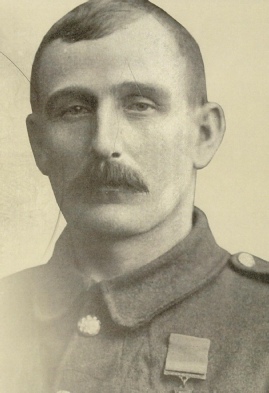
Thomas Kenny was born at South Wingate on 4 April 1882. After he left St Mary’s Roman Catholic School at Wingate, he worked as a quarryman and later as a miner.
By 1914 he was married with six children and living in Walker’s Buildings, South Wingate. We can only guess at the reasons that made Thomas Kenny leave his family, home and work in 1914 to join the Army, but possibly a clue may be found in what he told an audience in his home village in March 1916:
“All I can say is that I did my duty in France to the best of my ability”
“About 12.30am a man came and said he could hear moaning over the parapet. I was afraid that this means that some of my men, who had started on a listening patrol, had been hit… I went down with my observer, a very nice Irishman from County Durham, who goes with me everywhere, and crept along… a very shallow trench. We soon came on one man down in the bottom of the ditch. It was difficult to move him but finally my observer got him on his back. Poor fellow had a bad wound in the side.”
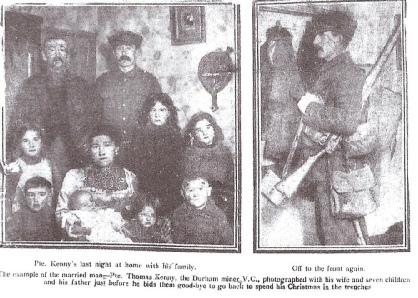
Private 17424 Thomas Kenny, ‘B’ Company, 13th (Service) Battalion DLI landed at Boulogne on 26 August 1915, nearly a year after he had volunteered. Training immediately began in France to prepare the men for the trenches and the battalion were asked to provide working parties, probably as a result of the high numbers of miners in their ranks.
A vivid description of the battalion’s life in the trenches survives in the letters of Lieutenant Philip Anthony Brown wrote home to his mother. Brown was born in Kent and after studying at Oxford, in 1911 he travelled to Newcastle-
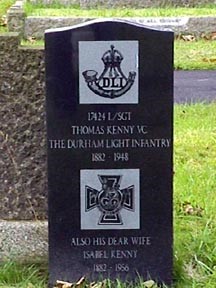
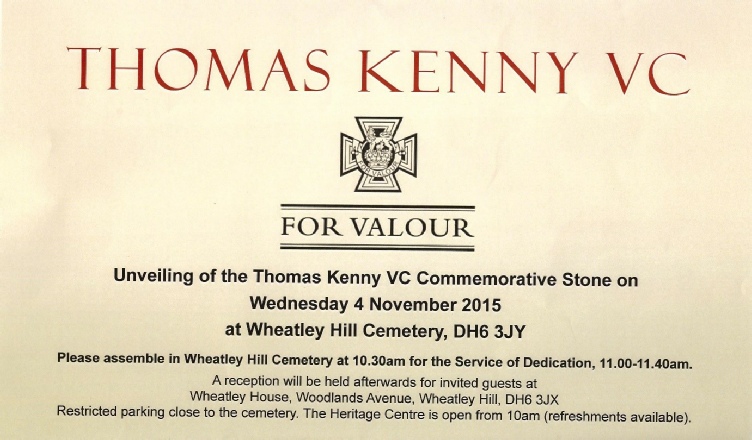
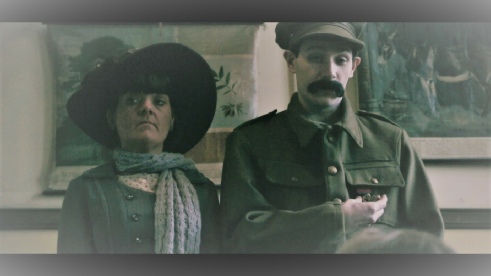
© Wheatley Hill Heritage Centre 2018